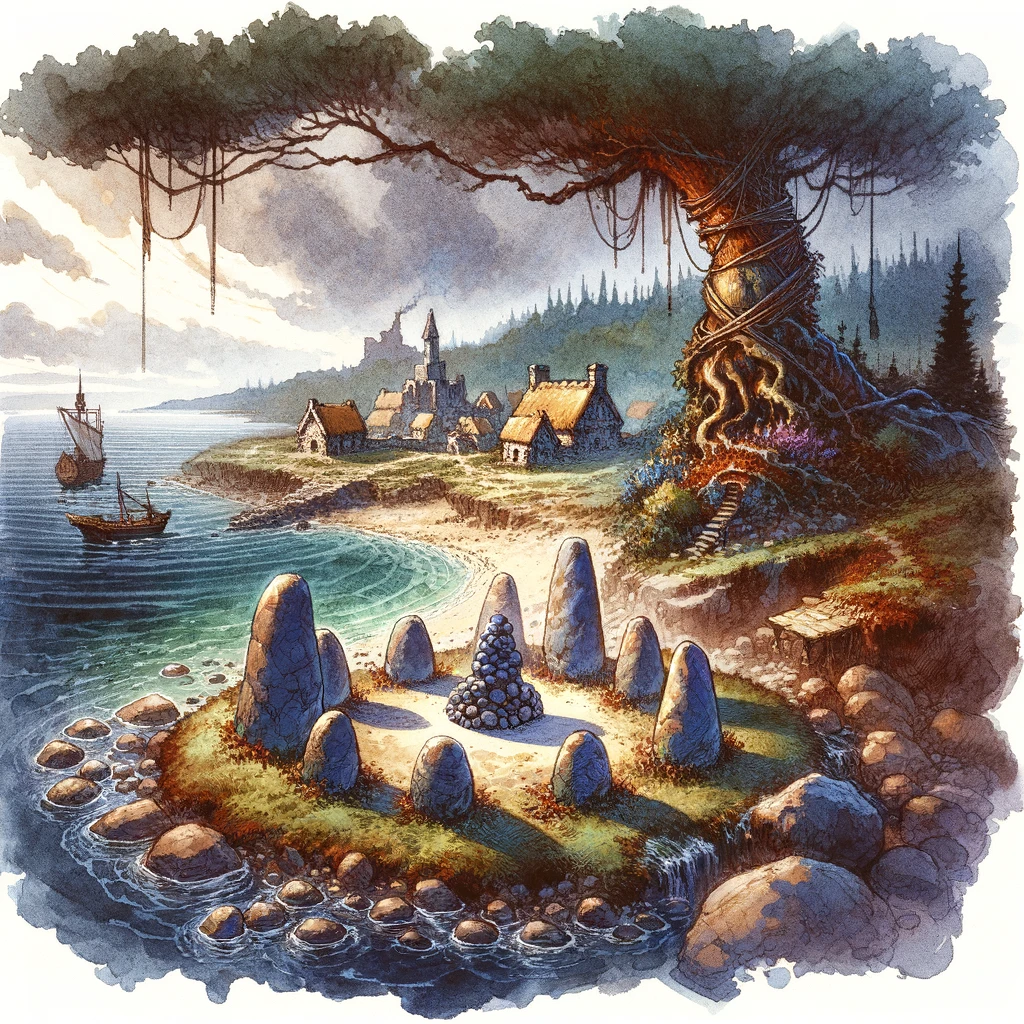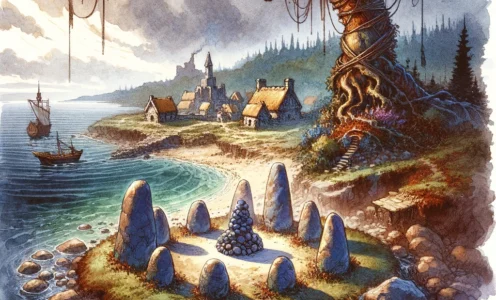Oak Island
The Outlands is one of the few places in the Multiverse where magic and psionics is fully disabled. That makes it an excellent place to build protective structures, or hide items of value. Magic can’t be used to find or retrieve such items if they are deep enough into the Outlands. That doesn’t make it impossible though, so a smart cutter will still look into protecting what ever it is he wants hidden. Some build vaults or fortresses. Others hide their goods—the proverbial buried treasure. There is a place near the Spire called Oak Island. It’s the site of one of the most well engineered anti-theft systems ever imagined. Well that’s at least what some say.
Oak Island can be found in the lake of Tir fo Thuinn, where the pursuit of the unknown runs deep, both literally and metaphorically. At about ten miles long and five miles wide, Oak Island lies in the shadow of the Spire, in a realm where magic and psionics are nullified, making it an ideal place for hiding valuable secrets. The island features a small cove on its Spireward end and is marked by unusual geological formations, including a circle of cone-shaped boulders signalling a deep, ancient mystery.
Central to the island’s lore is the infamous “money pit,” located within an oak grove. It has been the focus of numerous exploratory digs, each attempting to uncover the fabled treasure believed to be buried deep within. It’s called the money pit not because of the success of these treasure hunting operations, but because the seekers threw huge amounts of money into the digs, with almost nothing to show for it. Despite various expeditions employing technology and brute force, the treasure remains elusive, protected by a deep labyrinth of flooded tunnels, false treasure stashes and enigmatic warnings. Thus far a shaft has been sunk over 100 feet but hunters believe there is a chamber even deeper.
The island is also home to George Capol, a man who has dedicated his life to uncovering its secrets. He holds a wealth of knowledge about the island’s history and the many attempts to unearth its hidden treasures.
The Dark: The money pit does hide some treasure in chest some 100 feet deep. This treasure is a decoy. At 150 feet deep there is a vault containing the diary of a lich hunter. At 180 feet is a large spherical shaped natural cavern. The cavern holds an imprisoned psionic lich.
The creature was originally an illithid necromancer who was seeking immortality. It had extended its life by blending (blend life spell) his body with a troll’s, thus giving himself the ability to regenerate damage, but was still subject to aging—then learned how to achieve lichdom. This being reigned terror in the Astral for many years before a band of githyanki trapped it in a daring battle. However, the lich proved impossible to destroy, so the githyanki were forced to try and place it in a location where its powers could not help it escape. They chose the Spire.
The githyanki were unable to counter the creature’s regeneration and psionic powers so buried the lich while it was still recovering from the battle, and hoped it would never escape. The stones were left as warning that under the ground was something unholy. (The skull shaped stone under ground beneath a cross) They also left the stone tablet, which was correctly translated to promise treasure 40 feet lower. It was hoped, that if someone dug 40 feet deeper, and found nothing, they might give up. The lich has gone quite insane over the centuries, but will try to escape to location where psionics and magic still work before revealing its true power. Most of its abilities and powers don’t work so close to the Spire, but the regeneration still does.
Adventure Hooks
- Capol’s Quest: George Capol enlists the adventurers to help him finally claim the treasure he’s spent his life seeking. The quest involves innovative strategies to bypass the island’s defences and the dilemma of awakening what lies beneath.
Source: Brian
[Author’s Note: This concept is based largely on a real Oak Island that has a real Money Pit, that no one has been able to unearth, even to this day. It was first attempted to be dug up in the 1700s.]


